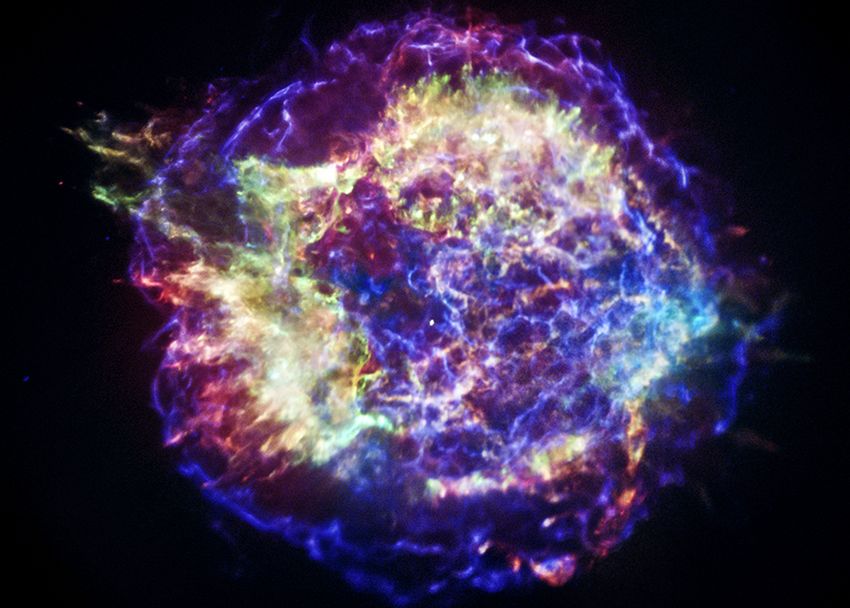In 1680 a heavy star in the Milky Way exploded. Fifty years ago, scientists discovered the remains of the powerful celestial event: the supernova remains known as Cassiopeia A.
The electronic radiation emitted by such objects ranges from radio waves to high-energy gamma radiation. Scientists therefore suspected that supernova remains might also play a key role in the origin of cosmic radiation. Cosmic radiation, which occurs throughout the universe, comprises mainly protons, heavy ions and electrons.
Supernova remains: Engine of cosmic radiation
The particles could draw their high energies from distant black holes or from dead stars like Cassiopeia A. Cassiopeia A is much nearer, being only 11,000 light years away from the Earth, and is one of the most interesting and best-studied bodies in the cosmos.
The recently-published observational data come as a huge disappointment. The two MAGIC telescopes measured gamma rays with an energy in the low double-digit teraelectronvolt (2) range – much too low for the dead star to act as an “engine” of cosmic radiation.
“Although the measured energy could accelerate heavy protons, it is not sufficient to explain the high energy of cosmic radiation observed,” says Razmik Mirzoyan of the Max Planck Institute for Physics and spokesperson for MAGIC.
Still a mystery: What accounts for the low energies?
Scientists believed Cassiopeia A to be a perfect source able to generate energy levels in the petaelectronvolt (2) range. Cassiopeia A is relatively young and bright. The shock waves of the historic stellar explosion spread at a tremendous speed, generating strong magnetic fields in the process – a prerequisite for imparting high energy to particles.
Scientists are puzzled by the relatively low energies found. It is possible that supernova remains simply do not develop enough energy to catapult particles into the high energy range.
“We therefore need to put our previous knowledge about shock waves set up by stellar explosions to the test," says Mirzoyan. “One possibility is that the fastest accelerated and highest-energy particles escaped so quickly that we are now only able observe the slower ones.”
(1) The research work was carried out by an international scientific team under the auspices of the Institute for Space Sciences (IEEC-CSIC), the Institut de Fisica d’altes Energies (IFAE) and the Institute of Cosmos Sciences (Universitat de Barcelona).
The results are based on 160 hours of observation between December 2014 and October 2016.
(2)
1 electronvolt (eV) is defined as the amount of energy gained by the charge of a single electron moved across an electric potential difference of one volt in a vacuum.
Teraelectronvolt (TeV): 1,000 x 1,000 x 1,000 x 1,000 electronvolts
Petaelectronvolt: 1,000 tetraelectronvolts
Publication:
“A cut-off in the TeV gamma-ray spectrum of the SNR Cassiopeia A”, Monthly Notices of the Royal Astronomical Society (MNRAS, 2017), MAGIC Collaboration (M. L. Ahnen et al.), DOI: 10.1093/mnras/stx2079
Contact:
Dr Razmik Mirzoyan
Max Planck Institute for Physics
Tel.: +49 89 32354-328
razmik.mirzoyan@mpp.mpg.de
